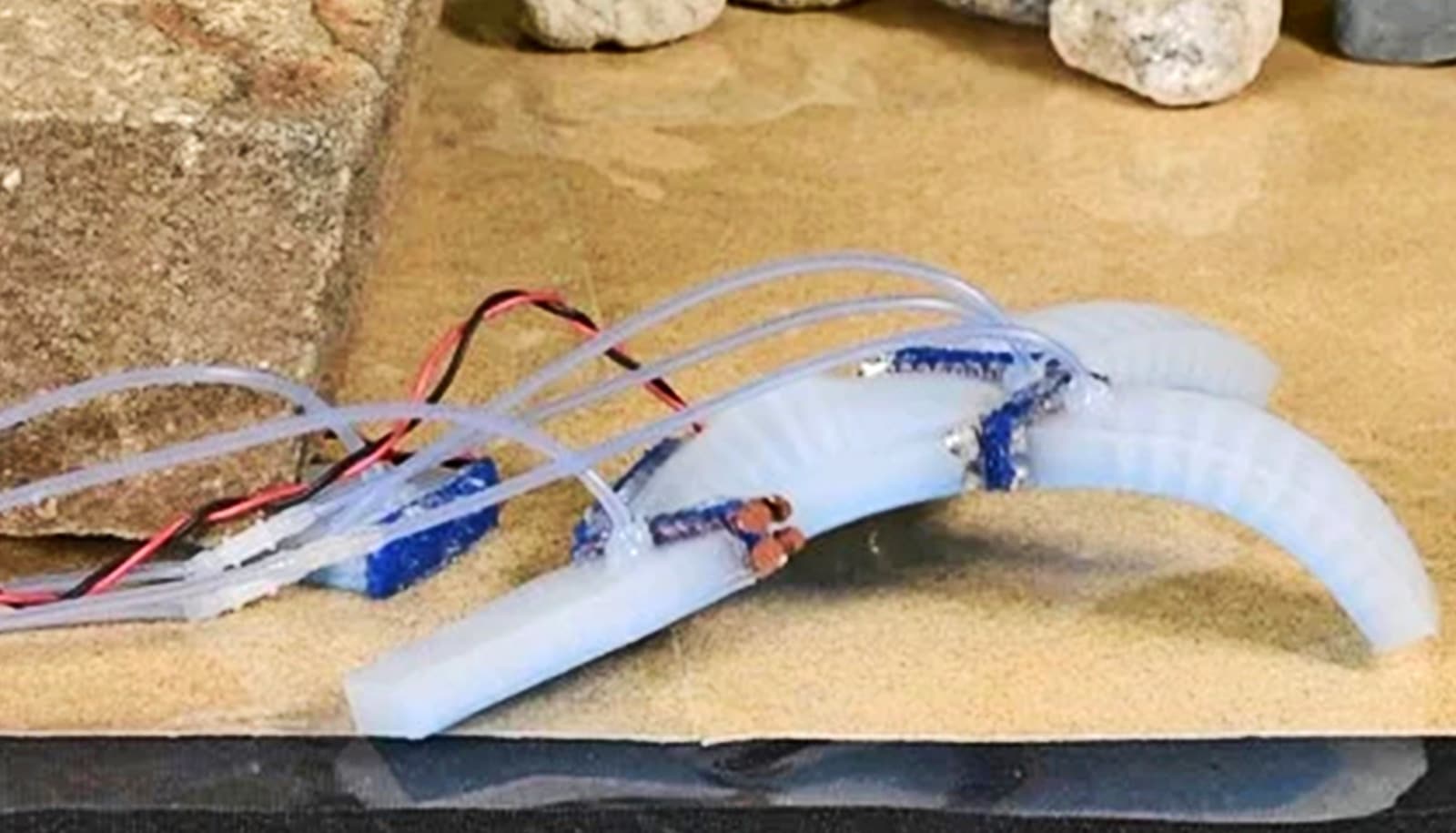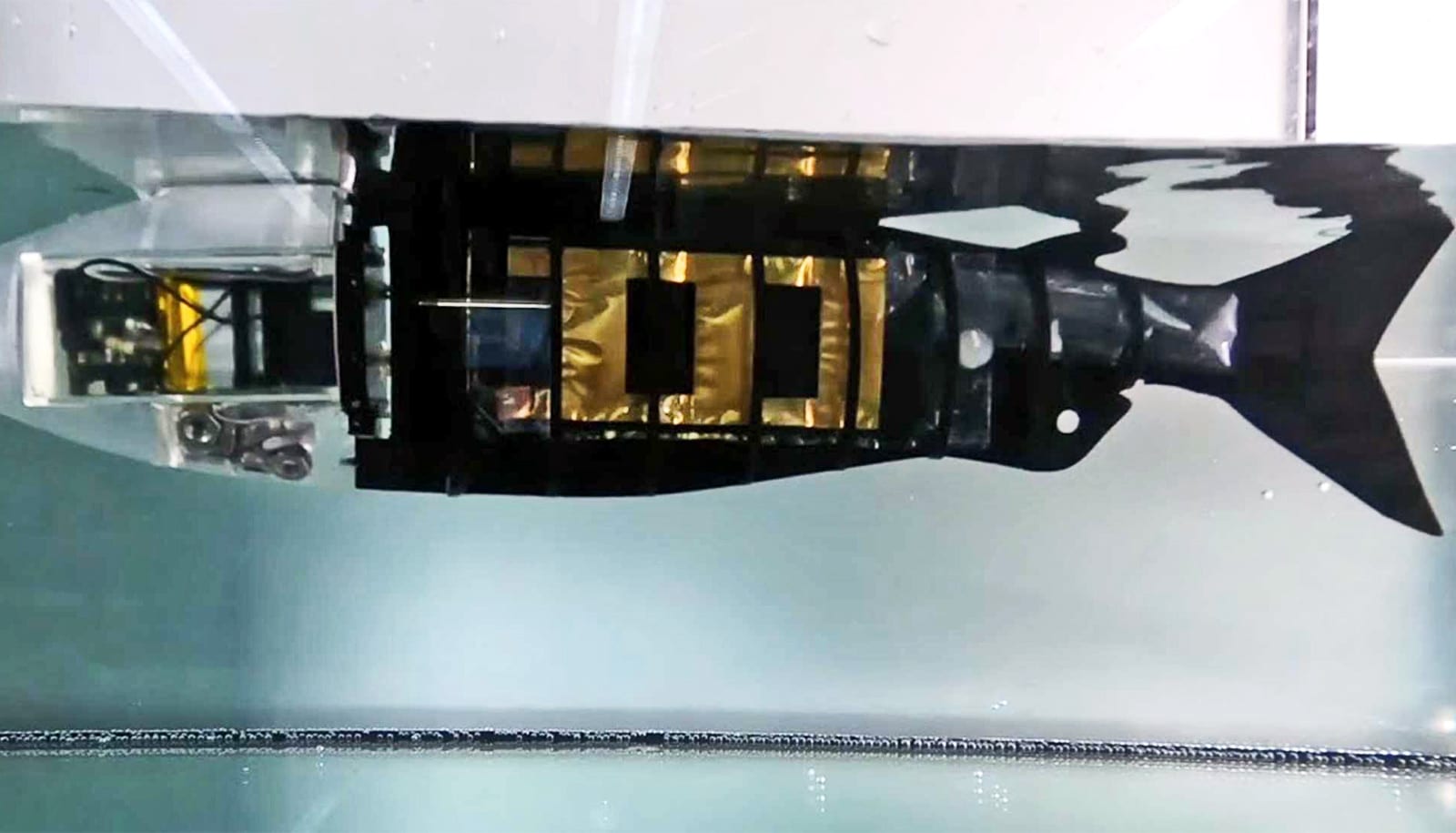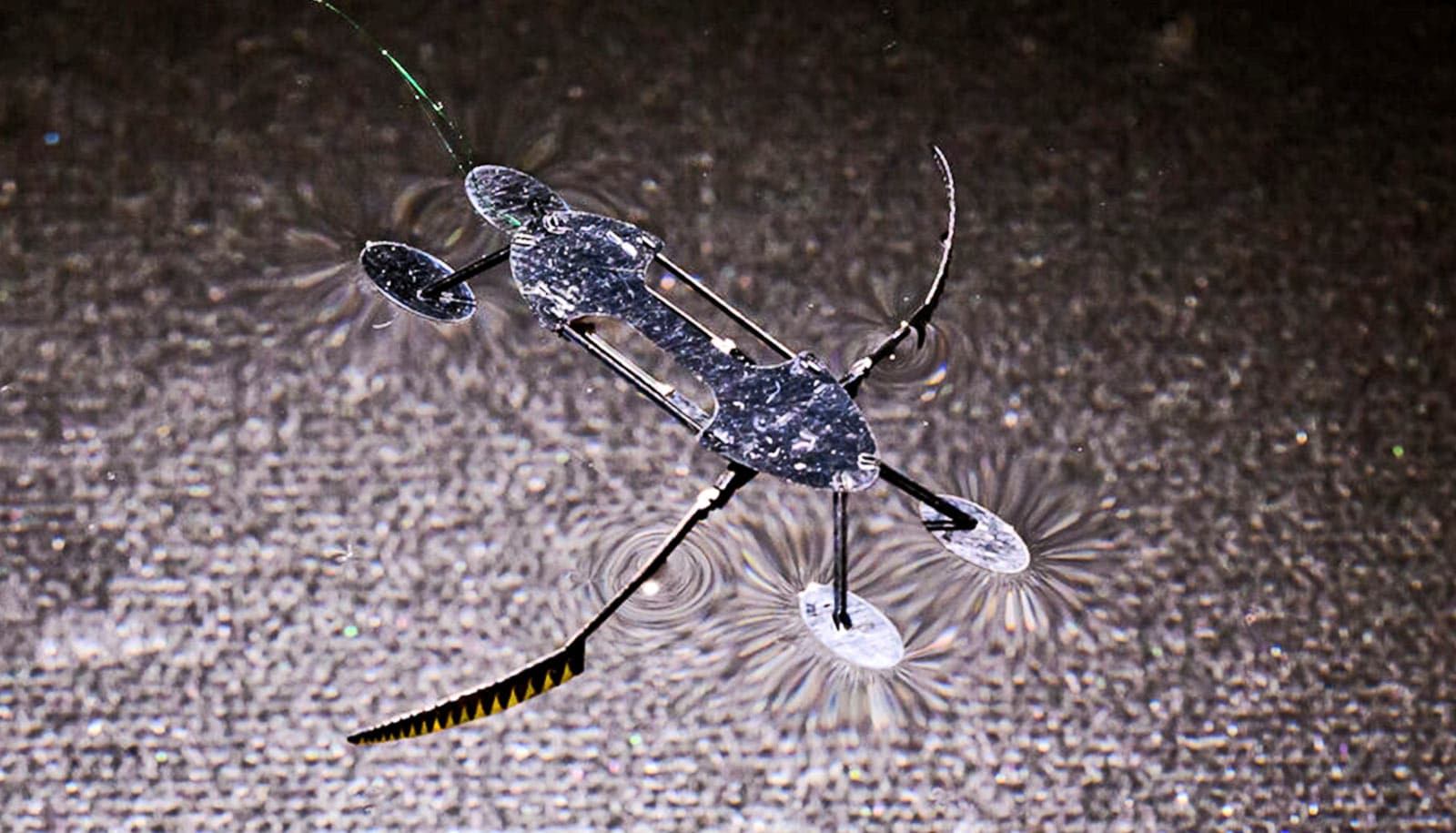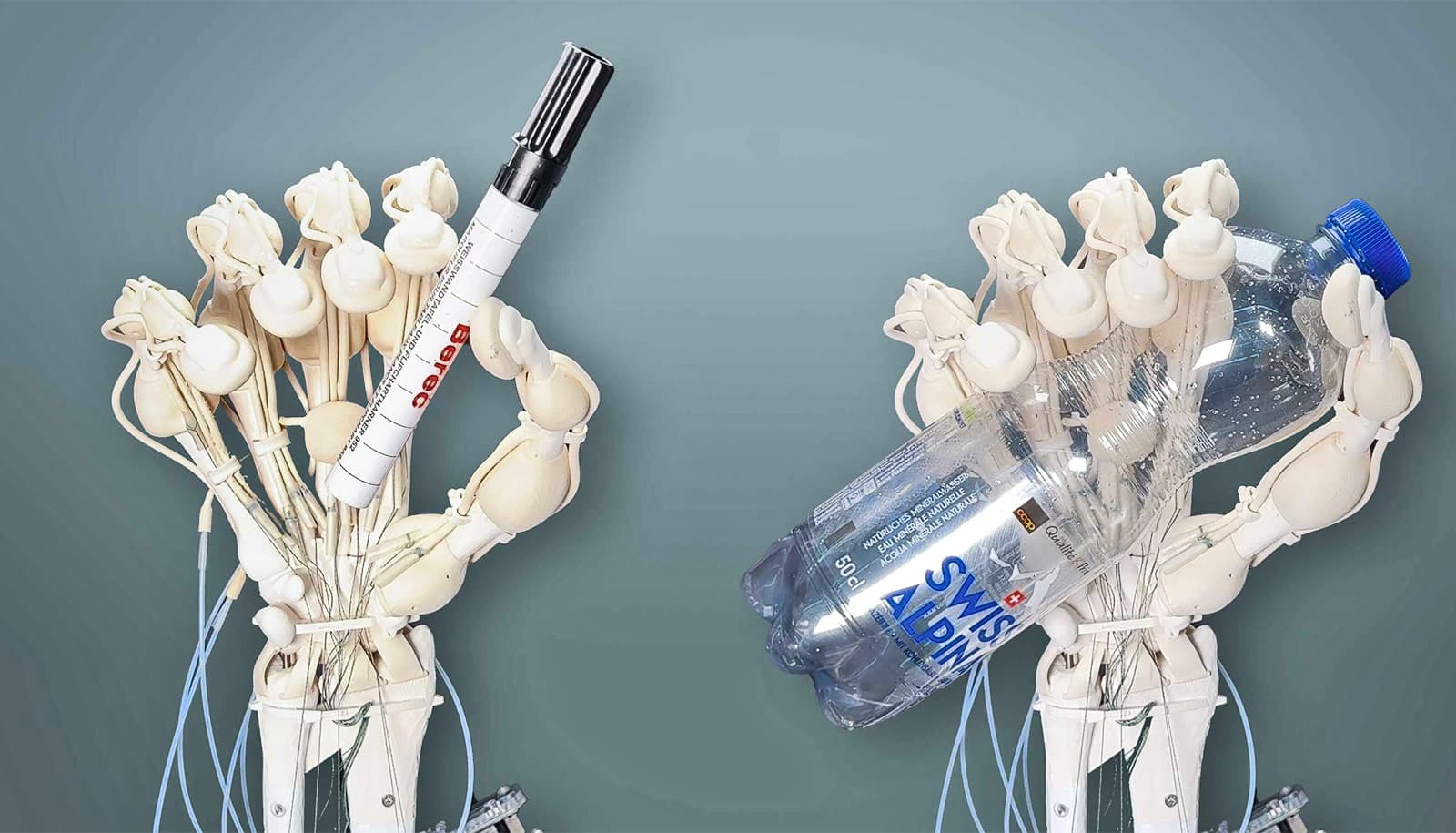A team of researchers has beaten its own record for the fastest swimming soft robot, drawing inspiration from manta rays to improve their ability to control the robot’s movement in the water.
“Two years ago, we demonstrated an aquatic soft robot that was able to reach average speeds of 3.74 body lengths per second,” says Jie Yin, corresponding author of a paper on the work and an associate professor of mechanical and aerospace engineering at North Carolina State University.
“This is a highly engineered design, but the fundamental concepts are fairly simple.”
“We have improved on that design. Our new soft robot is more energy efficient and reaches a speed of 6.8 body lengths per second. In addition, the previous model could only swim on the surface of the water. Our new robot is capable of swimming up and down throughout the water column.”
The soft robot has fins shaped like those of a manta ray, and is made of a material that is stable when the fins are spread wide. The fins are attached to a flexible, silicone body that contains a chamber that can be pumped full of air. Inflating the air chamber forces the fins to bend—similar to the down stroke when a manta flaps its fins. When the air is let out of the chamber, the fins spontaneously snap back into their initial position.
“Pumping air into the chamber introduces energy into the system,” says Haitao Qing, first author of the paper and a PhD student at NC State. “The fins want to return to their stable state, so releasing the air also releases the energy in the fins. That means we only need one actuator for the robot and allows for more rapid actuation.”
Studying the fluid dynamics of manta rays also played a key role in controlling the vertical movement of the soft robot.
“We observed the swimming motion of manta rays and were able to mimic that behavior in order to control whether the robot swims toward the surface, swims downward, or maintains its position in the water column,” says Jiacheng Guo, coauthor of the paper and a PhD student at the University of Virginia.
“When manta rays swim, they produce two jets of water that move them forward. Mantas alter their trajectory by altering their swimming motion. We adopted a similar technique for controlling the vertical movement of this swimming robot. We’re still working on techniques that will give us fine control over lateral movements.”
“Specifically, simulations and experiments showed us that the downward jet produced by our robot is more powerful than its upward jet,” says Yuanhang Zhu, coauthor of the paper and an assistant professor of mechanical engineering at the University of California, Riverside.
“If the robot flaps its fins quickly, it will rise upward. But if we slow down the actuation frequency, this allows the robot to sink slightly in between flapping its fins—allowing it to either dive downward or swim at the same depth.”
“Another factor that comes into play is that we are powering this robot with compressed air,” Qing says. “That’s relevant because when the robot’s fins are at rest, the air chamber is empty, reducing the robot’s buoyancy. And when the robot is flapping its fins slowly, the fins are at rest more often. In other words, the faster the robot flaps its fins, the more time the air chamber is full, making it more buoyant.”
The researchers have demonstrated the soft robot’s functionality in two different ways. First, one iteration of the robot was able to navigate a course of obstacles arrayed on the surface and floor of a water tank. Second, the researchers demonstrated that the untethered robot was capable of hauling a payload on the surface of the water, including its own air and power source.
“This is a highly engineered design, but the fundamental concepts are fairly simple,” Yin says. “And with only a single actuation input, our robot can navigate a complex vertical environment. We are now working on improving lateral movement, and exploring other modes of actuation, which will significantly enhance this system’s capabilities. Our goal is to do this with a design that retains that elegant simplicity.”
The paper appears in the journal Science Advances.
Additional coauthors are from NC State and the University of Virginia.
Support for this work came from the National Science Foundation and the Office of Naval Research.
Source: North Carolina State University









